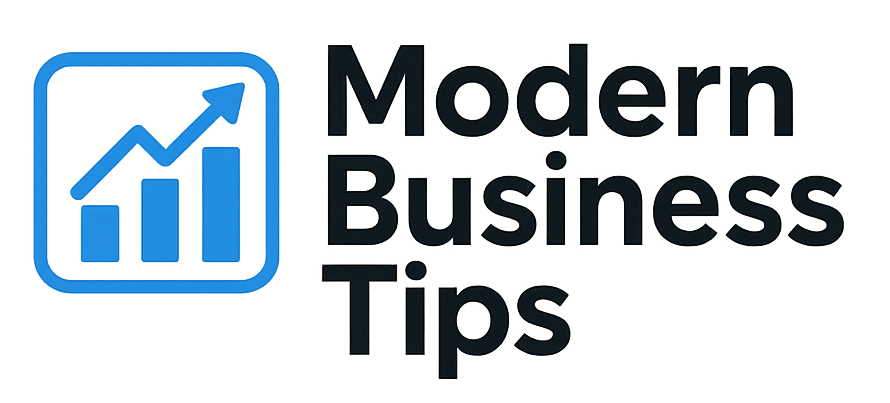Ever wondered why some companies get amazing results while others don’t? In B2B marketing, the key is often in the sales funnel. I’ve found a game-changing strategy that’s real and working for businesses today. By improving B2B funnel strategies, companies can boost their lead generation and nurturing.
In this section, I’ll share key techniques that have led to a huge increase in conversions. These insights will help you achieve similar success.
Key Takeaways
- Understanding the structure of the B2B marketing funnel is key for better conversion rates.
- Targeted lead generation strategies lead to better engagement.
- Success in B2B sales depends on effectively nurturing leads through the funnel.
- Data-driven insights help refine the sales funnel for better performance.
- Using automation tools makes managing the funnel more efficient and productive.
- Working together between marketing and sales teams can greatly increase conversions.
Understanding the B2B Marketing Funnel
The B2B marketing funnel is a guide for customers through their buying journey. It helps marketers connect with prospects and shape their choices. The funnel has key stages from awareness to making a decision.
What is a B2B Marketing Funnel?
A B2B marketing funnel shows the path from attracting leads to making loyal customers. It’s key for businesses to improve their marketing. It helps them understand how customers move through each stage.
Key Stages of the Funnel
The B2B funnel has three main parts:
- Awareness: This stage is about making products or services known. It’s where customers first see brands through marketing.
- Consideration: Prospects look at different options here. They research solutions to their problems. Content marketing and thought leadership help engage them.
- Decision: This is the final stage where customers choose to buy. Giving detailed info and support is key to making sales.
Importance of Each Stage
Each stage of the B2B marketing funnel is vital for guiding buyers. Understanding these stages helps marketers create better strategies:
| Stage | Objective | Marketing Tactics |
|---|---|---|
| Awareness | Capture attention and generate interest | Content creation, social media, SEO |
| Consideration | Engage leads and provide value | Email campaigns, webinars, case studies |
| Decision | Convert leads into customers | Demonstrations, testimonials, persuasive CTAs |
Identifying Your Target Audience
Knowing who your audience is is key to good B2B lead generation. By creating detailed buyer personas, I can make sure my marketing hits the mark. This part talks about making buyer personas, dividing the audience, and using research tools for insights.
Defining Buyer Personas
Buyer personas are the perfect customers I want to find. They include things like age, location, and job title. They also cover interests and what problems they face. Making detailed buyer personas helps me talk to them in a way that really connects.
Segmenting Your Audience
After I’ve made my buyer personas, I need to split the audience into groups. This lets me tailor my marketing to each group. It makes my B2B lead generation better and makes selling easier.
Research Tools for Insights
Using market research tools helps me learn more about my audience. Tools like surveys and analytics software give me deep insights. This information is super helpful for making my buyer personas better and improving my marketing.
Creating Awareness in the Top Funnel
Getting people to notice your brand at the top of the B2B marketing funnel is key. I use many ways to reach my audience. Content marketing and social media for B2B help me grab attention. Paid ads let me target specific groups, boosting visibility and interaction.
Effective Content Marketing Strategies
To grab the interest of possible clients, I create valuable content. I write blog posts, white papers, and case studies to show my expertise. SEO helps more people find my content. Quality over quantity is important, as good content keeps readers interested and encourages sharing.
Leveraging Social Media Platforms
Social media for B2B helps me reach more people. I use LinkedIn and Facebook to talk to business leaders. I share interesting posts and updates, keeping my audience in the loop. Pictures and stories make my brand more relatable.
Utilizing Paid Advertising Effectively
Paid ads are great for making your brand known. I target my ads to the right people, based on who they are and what they like. Google Ads and social media ads let me see how well my ads are doing. I adjust my ads to get the best results, making sure I’m getting the most bang for my buck.
| Strategy | Description | Benefits |
|---|---|---|
| Content Marketing | Creating informative resources such as blogs and white papers | Establishes authority, attracts traffic |
| Social Media Engagement | Connecting with audience via LinkedIn and Facebook | Fosters community, enhances brand visibility |
| Paid Advertising | Targeting ads to specific demographics | Increases reach, measurable outcomes |
Lead Generation Techniques
Effective lead generation techniques are key in the B2B funnel conversion process. By using specific strategies, I can make valuable connections with possible clients. This helps turn prospects into leads. Here are three important techniques to boost my lead generation and marketing success.
Offering Valuable Resources
One effective way to attract and engage possible customers is by giving valuable resources. This includes eBooks, whitepapers, or webinars. These resources show my expertise and build trust.
By providing information that solves prospects’ problems, I can get them to share their contact info. This leads to successful lead generation.
Engaging in Networking Events
Networking events are great for building relationships with future clients. Going to industry conferences, trade shows, or local meet-ups helps a lot. It allows for face-to-face talks that strengthen connections.
These conversations often lead to meaningful prospects. This opens the door for conversions later on.
Implementing Referral Programs
Referral programs turn happy customers into my business advocates. By rewarding existing clients for referrals, I get a steady flow of warm leads. This method uses trust, as people are more likely to respond to recommendations from those they know.
Nurturing Leads Through the Middle Funnel
Keeping in touch with leads is key as they move through the middle of the funnel. Good nurturing builds trust and helps them decide to buy. It involves using email marketing, making content that fits their needs, and hosting webinars and tutorials.
Email Marketing Best Practices
Email marketing is a strong tool for keeping leads interested. It’s best to segment your emails based on what people like and do. Sending emails when they’re most likely to be read helps a lot.
Creating Personalized Content
Personalizing content is very important. Knowing what each lead needs helps you make content that really speaks to them. Things like case studies and blog posts that solve their problems show you know what you’re talking about.
Utilizing Webinars and Tutorials
Webinars and tutorials are great for teaching and keeping people interested. They let you talk to people live, which builds a community. Sharing your knowledge this way shows you’re an expert and keeps leads interested in what you offer.
| Nurturing Strategies | Description | Benefits |
|---|---|---|
| Email Marketing | Targeted communication tailored to lead behavior and preferences. | Higher engagement rates and improved lead retention. |
| Personalized Content | Content designed to meet the interests and challenges of leads. | Stronger relationships and more trust. |
| Webinars/Tutorials | Interactive sessions to educate and engage visitors. | Better connections and chances for feedback. |
Converting Leads to Customers
Turning leads into paying customers is key in B2B strategies. I work on making the sales process better, building trust, and creating strong calls to action. These steps help increase the chances of leads becoming customers.
Optimizing Your Sales Process
Improving the sales process makes it smoother and easier to follow. Using customer journey maps helps spot problems and improve the parts that work well. By fixing these issues, leads are more likely to become customers, helping meet B2B funnel goals.
Building Trust and Credibility
Trust is vital in making buying decisions. I make sure my messages are open and add value at every step. Sharing testimonials and industry certifications helps build my reputation.
These actions help create a safe space for leads to move forward in the sales funnel. It’s all about turning leads into customers.
Crafting the Perfect Call to Action
A good call to action (CTA) can really boost conversion rates. Each CTA should be clear, appealing, and match the customer’s journey. I use action verbs and highlight the benefits of taking the next step.
Well-designed CTAs are key in moving leads toward becoming customers. They drive the funnel forward.
Key Metrics to Track in Your Funnel
Measuring how well your B2B marketing funnel works means looking at important metrics. These metrics show how your strategies are doing and how you can make them better. By focusing on funnel conversion metrics, marketers can improve their processes for better results. Here are some key areas to look at.
Conversion Rate Analysis
Conversion rate is a key sign of your funnel’s success. It shows what percentage of leads do what you want them to, like buying something or signing up for a newsletter. To find the conversion rate, divide the number of conversions by the total visitors and then multiply by 100. Using past data as a benchmark helps see how your current methods are doing.
Understanding Click-Through Rates
Click-through rates (CTR) show how many people click on a link after seeing an ad or email. A high CTR means your content is hitting the mark with your audience. It shows how well you’re grabbing the attention of possible customers. Keeping an eye on CTR helps you tweak your messages or designs to get better engagement.
Analyzing Lead Quality
Good leads are key to making sales. I can figure out lead quality by looking at things like who they are, how they engage, and what they’ve done before. Using B2B funnel analytics tools helps me sort and focus on leads that are most likely to buy, making my marketing more effective. Focusing on lead quality means my efforts are more likely to meet my business goals.
| Metric | Definition | Importance |
|---|---|---|
| Conversion Rate | Percentage of visitors completing desired actions | Indicates overall funnel effectiveness |
| Click-Through Rate (CTR) | Percentage of clicks on a link from viewers | Measures engagement and content relevancy |
| Lead Quality | Assessment of leads based on engagement and demographics | Ensures resources focus on high-potential prospects |
Enhancing Collaboration Between Teams
Success in B2B marketing depends a lot on teamwork between marketing and sales. I’ve seen that when these teams work together, they do better. This teamwork makes lead generation and nurturing more efficient, leading to more sales and growth.
Aligning Marketing and Sales Efforts
When marketing and sales have the same goals, they work better together. This unity makes sharing information easier. It also makes everyone feel like they’re working towards the same goal.
Establishing Clear Communication Channels
Good communication is key to success. I make sure teams can share updates easily. Tools like Slack or Microsoft Teams help keep everyone informed, supporting teamwork.
Regular Strategy Meetings and Reviews
Regular meetings are important for teamwork. They let teams check their plans, see how they’re doing, and change if needed. This keeps marketing and sales ready to adapt to new things.
Utilizing Automation Tools
In the world of B2B funnel optimization, marketing automation tools are key. They make processes simpler and help manage leads better. By automating tasks, companies can focus on strategies that really work.
Choosing the right marketing automation tools is important. It can greatly improve a company’s marketing plan.
Best Marketing Automation Platforms
When picking marketing automation tools, I look at several platforms. Each has its own special features. Here’s a quick look:
| Platform | Key Features | Best For |
|---|---|---|
| HubSpot | Lead tracking, email marketing, analytics | Content marketing & inbound strategies |
| Marketo | Lead generation, scoring, nurturing | Enterprise-level solutions |
| Pardot | Lead management, ROI reporting, integration | Salesforce users |
| ActiveCampaign | Email automation, CRM, multi-channel marketing | Small to medium-sized businesses |
How Automation Streamlines Your Funnel
Automation makes the B2B funnel better by making each stage smoother. It automates lead nurturing, so you can send timely and personal messages. This helps build stronger client relationships.
It also lets sales teams spend less time on routine tasks. They can then focus on closing deals and making customers happy.
Tracking Automation Success
It’s vital to track how well marketing automation tools work. By looking at campaign metrics, businesses can see what’s working best. Important numbers like open rates and conversion rates help improve strategies.
This way, companies can keep making their B2B funnel optimization better.
Real-Life Case Studies
In B2B marketing, seeing how strategies work in real life is super helpful. These examples show how companies have done well by using smart sales funnels. By looking at different brands, we can learn what made them successful.
We also see what didn’t work for others. This helps us avoid mistakes and do better in the future.
Brands That Got It Right
Some companies really hit the mark with their sales funnels:
- Salesforce – They have a great resource center and webinars that keep people engaged and bring in leads.
- HubSpot – Their inbound marketing, with valuable content, really boosts their conversion rates.
- Mailchimp – They make signing up easy and offer helpful analytics, which helps grow leads.
Key Takeaways from Successful Funnels
Looking at what works, we find some common things:
- Creating content that speaks to your audience improves lead quality.
- Making things easy for users helps more people convert.
- Always checking and improving your process makes things better over time.
Lessons from Failed Strategies
Not every plan works out. But learning from failures is just as important:
- Not keeping up with market changes can mean missing out.
- Being unclear in your message can confuse people.
- Not using data can lead to poor choices.
Adjusting Your Funnel Based on Analytics
In today’s fast-paced world, just using your gut isn’t enough for B2B marketing success. Using data analysis in B2B helps make smart choices that boost funnel performance. By checking performance metrics often, businesses can spot where to improve and tweak their strategies.
Importance of Data-Driven Decisions
Why data-driven decisions are key is clear. They help marketers target better and engage more people. Companies that use analytics well can find and fix funnel problems. This makes them more flexible and effective in reaching their audience.
A/B Testing for Continuous Improvement
A/B testing is a key tool for improving marketing plans. It lets me compare different campaign versions to see which works best. This way, I can understand what my audience likes and make better choices.
Adjusting Strategies Based on Insights
Data analysis in B2B gives insights that guide strategy changes. After collecting data, it’s important to use it to make real changes. By updating plans often, I keep campaigns fresh and in line with market and customer needs. This keeps my tactics sharp and effective.
Future Trends in B2B Marketing Funnels
Looking ahead, it’s vital to stay updated on B2B marketing trends. The field is changing, and knowing these shifts can help businesses stay ahead. Buyers now want personalized experiences and to understand their buying decisions.
AI technology is also changing marketing. It’s making marketing more efficient by analyzing data and targeting specific groups. Using AI, I can create campaigns that really speak to my audience.
Adapting to new trends is essential for the future of marketing. By keeping up with changes, I can improve my strategies and keep my business relevant. Embracing innovation will help me succeed in the fast-paced B2B marketing world.



